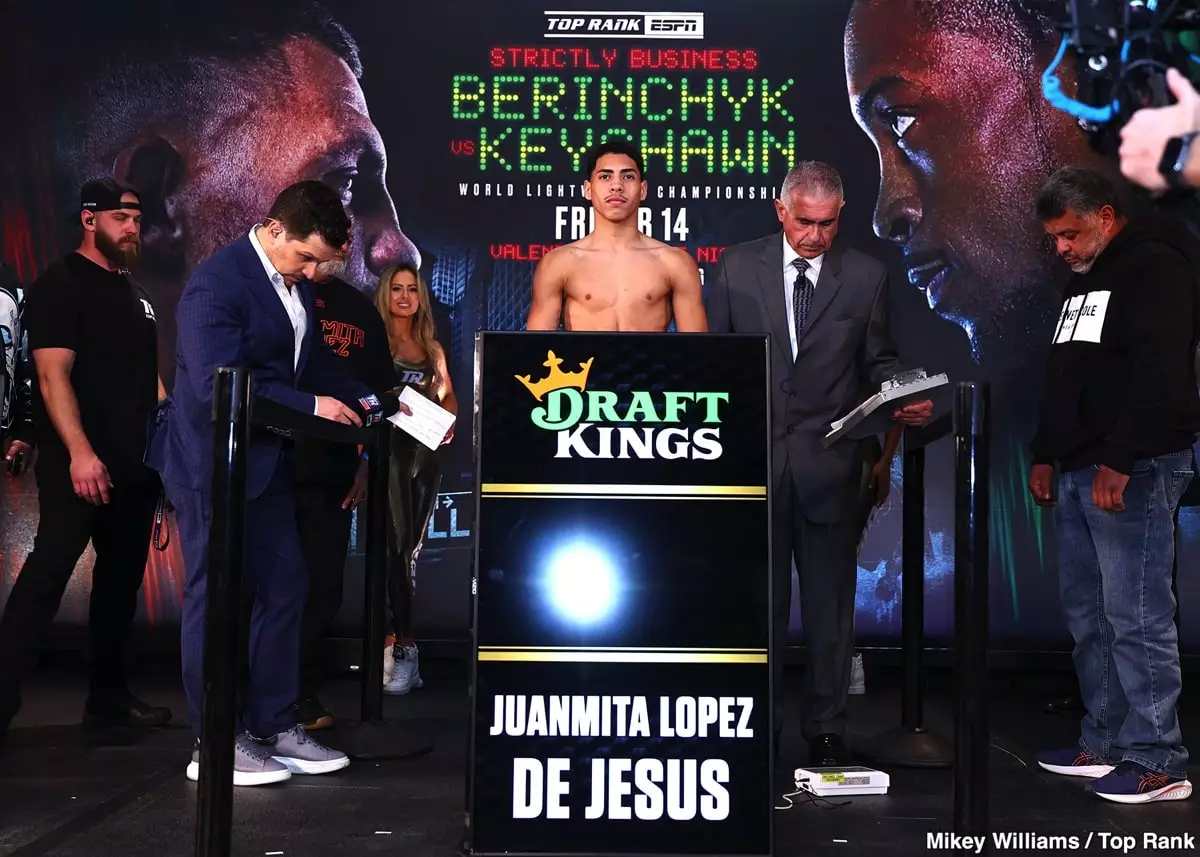In an era where social consciousness and activism have become integral parts of many social discussions, one might expect sports, particularly boxing, to reflect these values positively. Yet, the dark clouds of longstanding ignorance and racism seem more prevalent than ever. An alarming trend has emerged where such sentiments bubble up, no longer confined to the shadows but finding a legitimate platform, especially when competitive events gather the world’s attention. As a case in point, the upcoming bout between Denys Berinchyk and Keyshawn Davis serves as a reminder that the ring is not just a battleground for physical prowess but also a stage for a troubling societal discourse.
The incident surrounding Keyshawn Davis, who recently received a package filled with racist overtones, is a significant indicator of how deeply engrained these issues are in the world of boxing. Unfortunately, many in the community downplay such overt acts as mere trolling or antics “to hype up” the fight. This normalization minimizes the potential harm and discourages healthy dialogue about racism and ignorance that cannot simply be brushed aside or justified as “part of the game.”
As the rivalry heats up ahead of their anticipated match at the MSG Theater on Valentine’s Day, fans are excited but apprehensive. Both fighters bring distinct styles and approaches that promise an electrifying evening. Davis, known for his calculated strategy, tends to take a measured approach early on, allowing his opponent to lead before he adapts and seeks opportunities to exploit weaknesses. In contrast, Berinchyk thrives on footwork and crafty angles, often displaying agility that allows him to evade attacks effectively.
Berinchyk’s tendency to initiate the fight with feints and jabs will test Davis, who typically finds his rhythm when he can gauge his opponent’s movements. This fight is expected to shine a spotlight on the tactical brilliance of both fighters, making it paramount to see how each adapts to the other’s strategy. The psychological facets also play a crucial role as both aim to gain an upper hand, not just physically but mentally, particularly amid the surrounding noise of racial insensitivity.
Analyzing the Matchup: Strengths and Weaknesses
Analyzing the fighters reveals crucial strengths and weaknesses. Davis holds an advantage in hand speed and defensive techniques, offering him a chance to navigate Berinchyk’s offense effectively. However, his propensity to pull straight back leaves him open to counterattacks, exposing him to Berinchyk’s varied striking risks. Denys needs to capitalize on this aspect, turning Davis’s defensive movements into offensive opportunities.
On the other hand, Davis must harness his counterpunching ability while ensuring that the emotional burden stemming from recent racial incidents does not cloud his judgment. A measured, controlled fight could facilitate a clear path to victory. His ability to work the body early on may open up the high guard of Berinchyk, presenting an opportunity for significant scoring as rounds progress.
While predictions in boxing are fraught with uncertainty, many believe that Davis’s combination of speed, technique, and experience may ultimately lead him to a unanimous decision victory over Berinchyk. However, it is essential to note that if Berinchyk leverages his signature footwork and stays balanced—avoiding the habits that lead to being off-kilter—he can certainly make it a competitive bout throughout the twelve rounds.
Yet, this match extends beyond the ring and brings to light broader implications regarding societal attitudes and behaviors in sports. The wrestling with racism within the boxing community reflects a larger fight that transcends any one individual. It asks whether events can serve as more than just matches under bright lights, ultimately shining a light on the responsibility that athletes, promoters, and fans share in fostering a more inclusive environment.
As the fight night approaches, the focus should remain not only on the competition but also on confronting the societal biases that persist within it. The boxing ring can become a powerful symbol of defiance against ignorance, and the real victory may lie in dismantling the prejudice that still exists within this storied sport.

